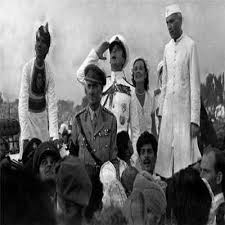The political system of India has a rich and diverse background that has evolved over centuries. The foundations of the modern Indian political system can be traced back to ancient and medieval times, influenced by various empires, kingdoms, and colonial powers. Let us discuss the background of the Indian political system.

- Ancient India: In ancient India, the political landscape was characterized by numerous kingdoms and republics. These entities were governed by monarchies or elected assemblies known as “sabhas” and “samitis.” Prominent kingdoms such as the Mauryas, Guptas, and Cholas ruled over vast territories and had well-established administrative systems.
- Medieval Era: The medieval period saw the rise of Islamic dynasties, including the Delhi Sultanate and the Mughal Empire. The political system during this time was centralized, with a powerful ruler holding authority. The Mughal emperors, in particular, wielded considerable political power and were known for their elaborate courts and administrative structures.
- British Colonial Rule: The British East India Company arrived in India in the early 17th century and gradually established control over various parts of the country. By the mid-19th century, the British Crown took direct control, transforming India into a colony of the British Empire. The British introduced a centralized administration and implemented policies that exploited India’s resources and subjugated its people.
- Indian National Movement: During the late 19th and early 20th centuries, India witnessed a strong movement for independence from British rule. Leaders such as Mahatma Gandhi, Jawaharlal Nehru, and Subhash Chandra Bose played pivotal roles in mobilizing the masses and demanding self-governance. The Indian National Congress, founded in 1885, became the principal political organization advocating for independence.
- Independence and the Constitution: India achieved independence from British rule on August 15, 1947. A Constituent Assembly was formed to draft a constitution for the newly independent nation. Dr. B.R. Ambedkar, along with a team of experts, played a crucial role in drafting the Indian Constitution, which was adopted on January 26, 1950. The Constitution established India as a sovereign, socialist, secular, and democratic republic.
- Features of the Indian Political System: The Indian political system is characterized by a parliamentary form of government. It consists of three branches: the Executive, the Legislature, and the Judiciary. The President is the head of state, while the Prime Minister is the head of government. The Parliament consists of two houses: the Rajya Sabha (Council of States) and the Lok Sabha (House of the People).
- Federal Structure and States: India follows a federal system of government, where powers are divided between the central government and the states. Currently, India consists of 28 states and 8 Union territories, each with its own legislative and executive bodies.
- Electoral System: India has a multi-party system, with elections held regularly at the national, state, and local levels. The Election Commission of India oversees the electoral process, ensuring free and fair elections.
- Challenges and Evolution: The Indian political system has faced numerous challenges, including social and economic disparities, caste-based politics, regional conflicts, and communal tensions. Over the years, the system has undergone changes and reforms to address these issues and strengthen democratic governance.
In conclusion, the background of the Indian political system is shaped by a long and complex history, ranging from ancient republics and monarchies to colonial rule and the struggle for independence. The Constitution of India, with its democratic principles and federal structure, lays the foundation for the functioning of the political system in the world’s largest democracy.
Important Links